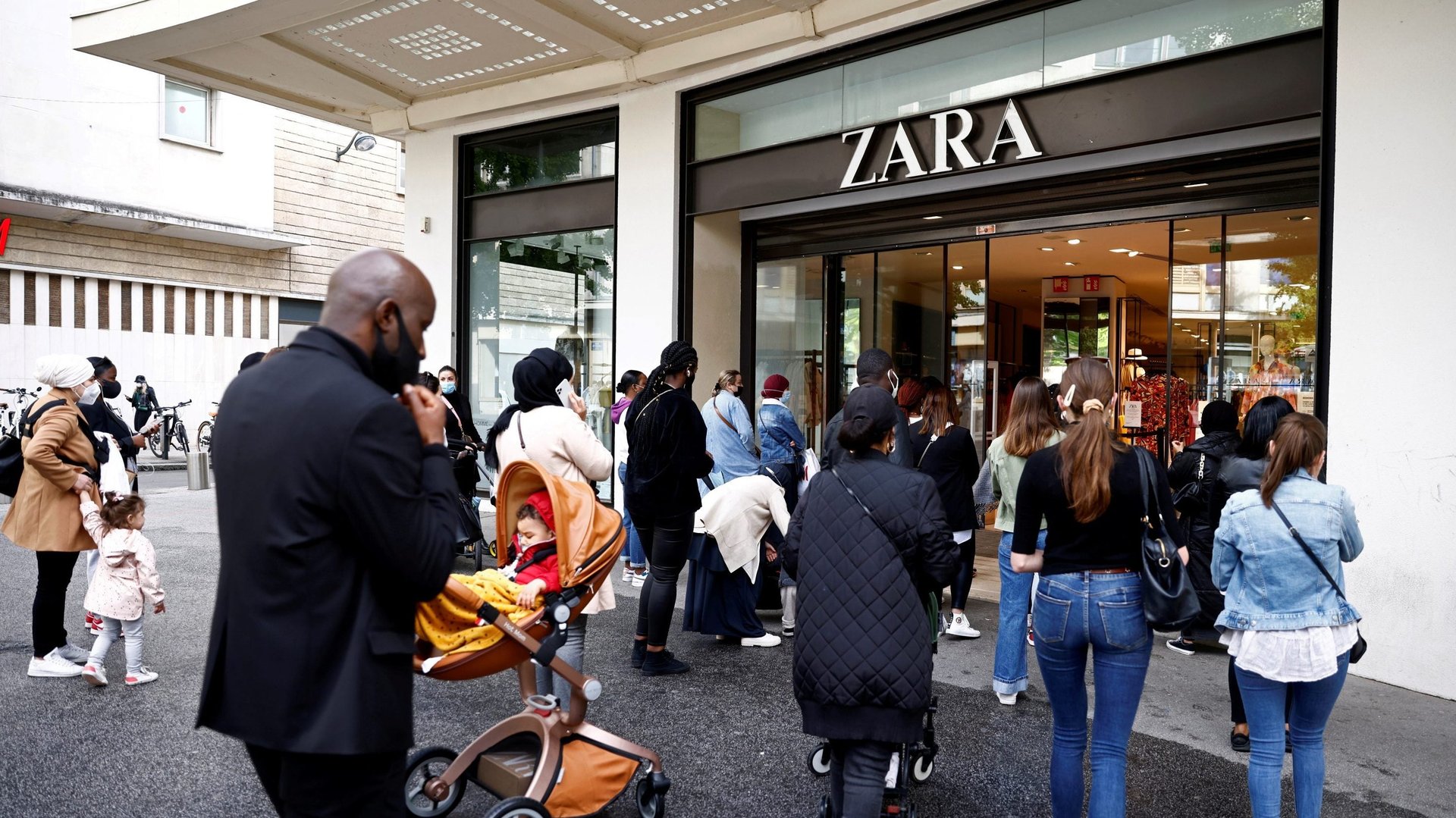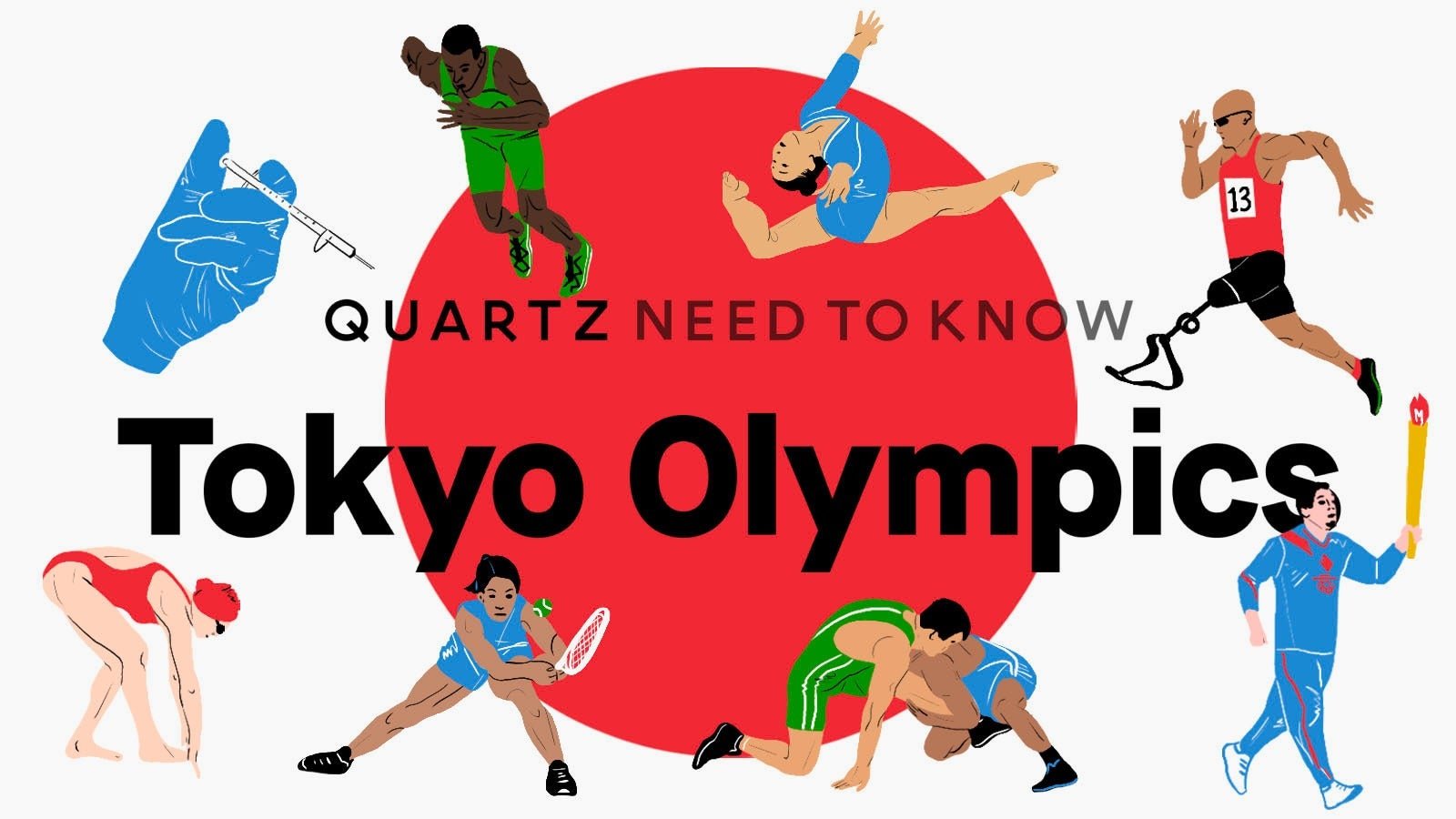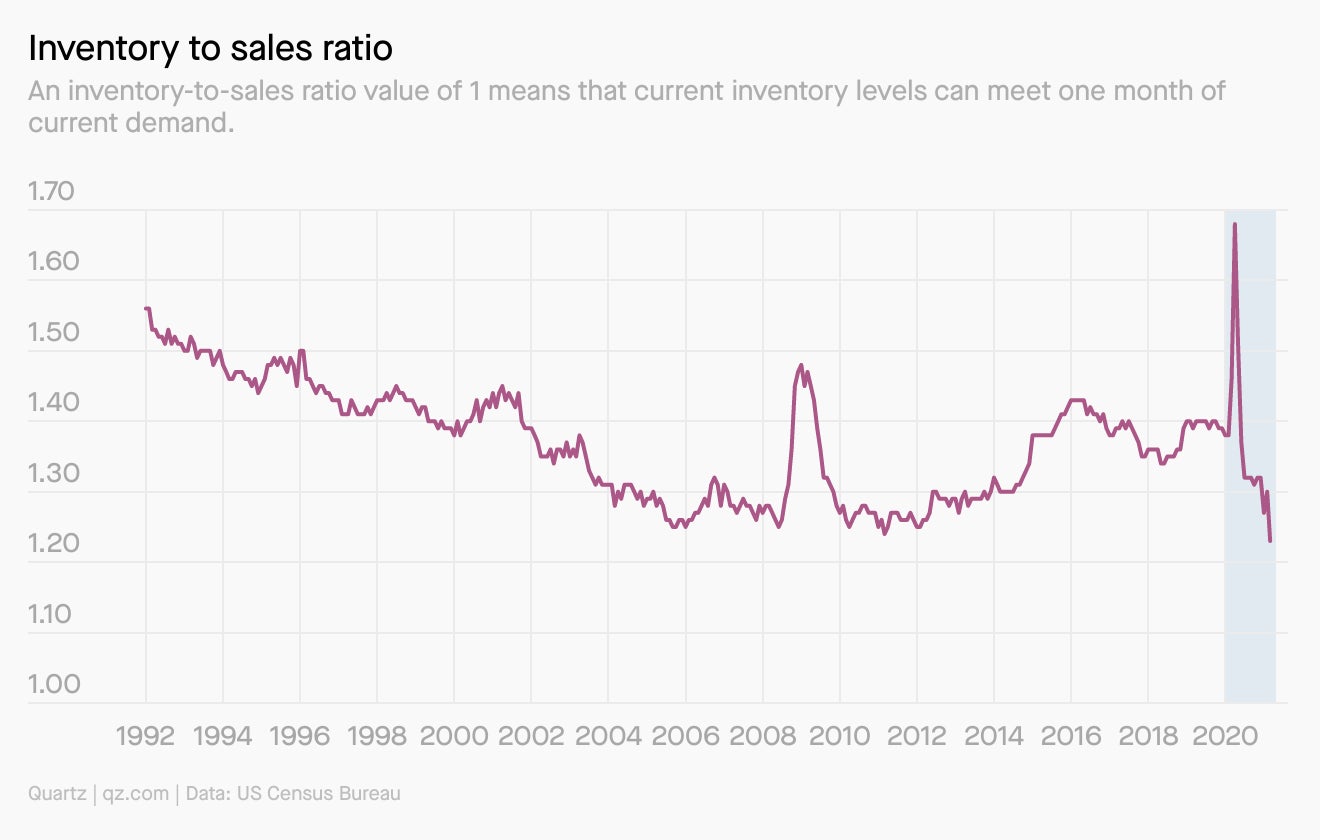Return to splendor
Hello Quartz readers,


Hello Quartz readers,
Last year, Covid-19 had barely engulfed the world when people began anticipating the recovery: preparing for it, imagining it, willing it into being.
At the end of March 2020, for instance, United Nations secretary general António Guterres called for a recovery that would lead to “a different economy.” It had been just three weeks since the WHO declared Covid-19 a pandemic and the US suspended flights from Europe, and a week since India announced a lockdown. Around 36,000 people had died worldwide, no one knew if second or third waves were in the offing, and there were no vaccines. Any sort of recovery, we now know, was a long way away.
It’s tempting to think that at this moment—June 2021—we’re much closer to recovery, particularly if you live in the US or the UK, where vaccinations have made near-normal life possible for many, and where policymakers are now intent on rebuilding the economy rather than stanching its wounds. The US unemployment rate fell below 6% in May, down from its peak of 14.8% in April 2020, and a Federal Reserve official said the central bank was nearing the moment when it would ease up on its bond-purchase stimulus.
But a full recovery certainly isn’t around the corner, as evidenced by failures to reach herd immunity and shortages of vaccines for developing countries. In fact, given what we know now about how Covid-19 has ravaged economies and lives, the very idea of recovery should move beyond case counts and death statistics. So we asked experts in fields from economics to philosophy: What markers will show that we’ve truly recovered? Here’s what they told us:
- 💉 Global vaccinations. Under-vaccinated countries will have knock-on effects around the world: persistent travel restrictions, disrupted supply chains, and constant caution against the arrival of variants from overseas.
- 📈 The macroeconomy. GDP still has a ways to go, and “recovery” itself is an imprecise term. “It’s not all that different from when astronomers decide whether Pluto is a planet or not,” econ professor Ricardo Reis told us. “It’s not airtight.”
- 😷 Epidemiology. For society to function smoothly, R-naught—the number that shows how many other people a sick individual can infect—has to be less than one.
- 🛒 Consumer spending. Spending won’t return to 2019’s patterns—it will realign. “People are now used to doing more at home,” says Jaana Remes, a partner at the McKinsey Global Institute. “They’ve bought better TVs or home gyms or coffee makers.”
- 👪 Community resilience. Measuring “resilience” instead of recovery is a way to measure when people stop reporting anxiety or stress, and how well they can cope the next time around.
- 🌱 “Well-being.” Be wary of how that word gets co-opted by politicians and economic experts: They’ll be keen to announce the world has recovered through the usual limited indicators, like GDP and inflation.
The Olympics are… on?

As of right now, the Games are moving ahead in Tokyo, July 23 through Aug. 8. We’re not sure how to feel about it! There’s convincing evidence that Japan is not yet ready to host an event of this magnitude, and one that relies on so much international travel. On the flip side, who couldn’t use an injection of sequins and athleticism directly to the brain?
To process this anxiety-citement, the Need to Know team will be running a pop-up daily email—Need to Know: Tokyo Olympics—for the duration of the Games. You can expect fun facts like these:
- The Olympics’ biggest sponsors pay for a four-year package called a quadrennium, which gives them marketing rights to one summer and one winter Olympics. (Price tag: up to $300 million.)
- Japan has already invested $25 billion in the Games, 80% of which comes from the country’s taxpayers. A cancellation could cost the country $41 billion.
- Some 10,000 Olympic volunteers have reportedly quit over Covid-19 concerns, out of the 80,000 who signed up.
- If the Olympics do go ahead, the Games will feature five new sports this year: men’s baseball/women’s softball, karate, skateboarding, sport climbing, and surfing.
And if the whole thing doesn’t happen, we’ll send you an email about that, too.
Can you check in the back?
As business booms, some US manufacturers are being left with no choice but to drain their stockpiles. The US Census Bureau—which tracks businesses’ inventory-to-sales ratio (pdf) across retail, wholesale, and manufacturing—found a ratio of 1.2 in March, meaning inventory levels can meet 1.2 months’ worth of sales. That’s the lowest level in the past 30 years, and down from a high near 1.7 after the pandemic hit.

There are multiple reasons for this plunge, including labor crunches, supply bottlenecks, and sudden consumer demand. In the first quarter of 2021, two economists found that close to a third of the growth in domestic demand was met by running down inventories. They issued a cautionary note as well: Inventories “cannot be run down forever.”
Three dinner-table convos
🔬 Nearly half of college students are considering careers in science. Covid-19 put a spotlight on medicine. Now, 56% of college students are reconsidering their career path as a result of the pandemic, with 45% considering a career in healthcare or science, according to a new global survey of parents in Brazil, China, the UK, and the US. Meanwhile, US medical school applications are up 18% this year.
📞 Telehealth fraud is costing the US billions. In October, the Department of Justice announced the biggest healthcare fraud bust in US history: $6 billion in losses due to fraudulent claims—$4.5 billion of them in telehealth scams. How does one execute a telehealth scam? Telemedicine execs share information about Medicare patients (people who are elderly or disabled) with telemarketers, who direct those patients to procedures requiring samples be sent to labs, which get reimbursed. The telemarketers make money by charging the labs, the labs make money by charging for unnecessary tests, and the telehealth providers are paid by both telemarketers for the data and labs for the referrals.
🎓 The pandemic has been good to MasterClass. Mention “virtual class” and you can almost hear a collective groan reverberate through the internet. But MasterClass has a different story: The slickest of the “massive open online course” (MOOC) platforms saw 1,000% user growth last year. What would convince listless adults to shun the call of a mindless Netflix binge and opt for homeschooling? A combination of celebrity faculty, Hollywood-caliber productions, and a pandemic-driven thirst for virtual learning that doesn’t feel slapped together.
☝️ That last one’s a sneak peak at a Quartz member perk: weekly company profiles, directly in your inbox. To get the lowdown on companies in the news—coming up: Coinbase, Cameo, and Farfetch—sign up for a free trial here. Think of it as a masterclass in good email.
Potent quotable
While there are a few issues plaguing India’s vaccine rollout, the most egregious is the fact that most Indians, many of whom live in poverty, are being made to pay for their shots. And the government is allowing vaccine producers to charge whatever they like.
India’s vaccine policy underwent a curious shift in April: The government deregulated vaccine prices. All of a sudden, producers could “self-set” the price for their vaccines, and sure enough, India’s two vaccine producers swiftly increased prices by two to six times in just one week.
While the cost of a vaccine in India is just Rs800 ($11) for both doses, that still leaves a significant portion of the population scrambling. A person at the poverty line may only earn about Rs50 a day on average, and at least 25% of India’s population is below the poverty line. As it stands, informal workers are being forced to spend half of a household’s monthly salary to vaccinate the household’s adults.
Pop quiz
Which of these is not a real Zoom feature?
1️⃣ Zoom Rooms, a conference room display system
2️⃣ Zoom Events, an event-management platform for remote and in-person participation
3️⃣ Zoom Immersive View, to blur the line between WFH and the office
4️⃣ Zoom Public Speaking, to make it look like everyone on the call is in their underwear
If you’re thinking 1, 2, and 3 are real, you’d be right: As the pandemic subsides in some parts of the world, Zoom’s bubble is popping. The company expects year-over-year revenue growth to fall to 50% in fiscal 2022, from triple digits this year. As a result, Zoom is readying for a future that’s at least a little face-to-face.

Essential reading
- The latest 🌏 figures: 173.7 million confirmed cases; 3.7 million deaths; 2.2 billion vaccine doses administered.
- Labor pains: America’s “goldilocks” May jobs report won’t shake the Fed off course.
- To what degree: India’s lagging vaccination drive is torpedoing students’ study-abroad dreams.
- Techscape: Tech workers who flocked to Taiwan’s Covid-free haven are now fleeing.
- Something new to stress about: Here’s everything you need to know about ransomware.
Our best wishes for a healthy day. Get in touch with us at [email protected], and live your best Quartz life by downloading our iOS app and becoming a member. Today’s newsletter was brought to you by Samanth Subramanian, Adam Epstein, Michelle Cheng, Annalisa Merelli, Anne Quito, R Ramakumar, Scott Nover, and Kira Bindrim.